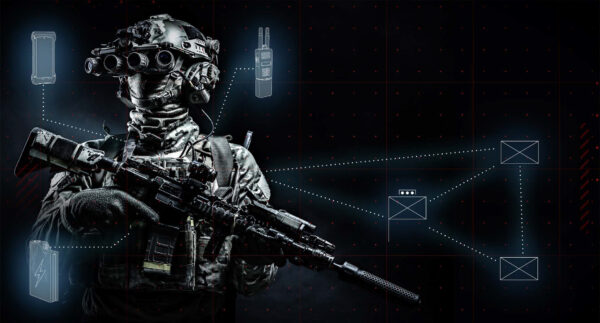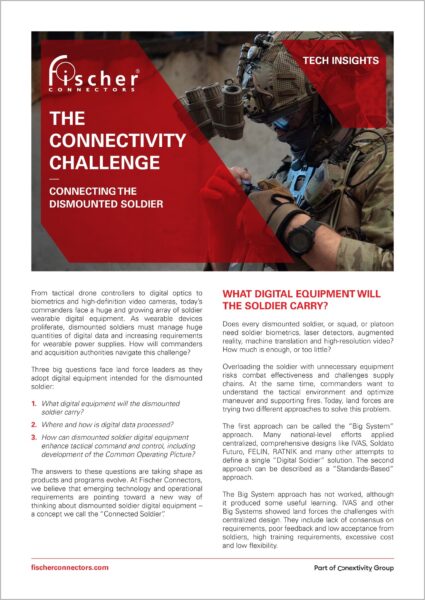In its new ‘Tech Insights’ paper, Fischer Connectors answers the three big questions facing land force leaders as they adopt digital equipment intended for the dismounted soldier.
Connecting the dismounted soldier: three big challenges face land force leaders
December 11, 2024 · 2 min readFrom tactical drone controllers to digital optics to biometrics and high-definition video cameras, today’s commanders face a growing array of soldier wearable digital equipment. As wearable devices proliferate, dismounted soldiers must manage huge quantities of digital data and increasing requirements for wearable power supplies.
Three big questions face land force leaders as they adopt digital equipment intended for the dismounted soldier:
- What digital equipment will the dismounted soldier carry?
- Where and how is digital data processed?
- How can dismounted soldier digital equipment enhance tactical command and control, including development of the Common Operating Picture?
 What digital equipment will the soldier carry?
What digital equipment will the soldier carry?
At Fischer Connectors, we think that a “Standards-Based” approach delivers maximum flexibility in selecting devices for specific unit and mission settings. Common commercial and military standards like USB, HDMI, NETT WARRIOR, NATO STANAG 4695 and others allow maximum innovation within a common framework.
Where is data processed and stored?
Data generated by soldier-wearable sensors and battle management systems is increasing by orders of magnitude. Where will all this data be processed? Does the soldier system just send lots of raw data from the tactical edge, or does the dismounted soldier carry computing and data storage capability? At Fischer Connectors, we think that the dismounted soldier should carry the minimum possible amount of sensor and mission data. Cost and complexity will push dismounted soldier equipment toward minimal on-soldier processing and storage. Soldier-level data processing can be limited and concentrated in a single secure end-user device like a tactical phone running the soldier’s Battle Management software.
How does dismounted soldier data improve tactical command and control?
When every soldier is both a sensor and a shooter, there is real potential for commanders to be overwhelmed with digital input. At the same time, the individual soldier could be overwhelmed with sensor data and requests for data arriving on the EUD. At Fischer connectors, we think that the best answers will emerge through exercise and operational experience, combined with the seasoned judgment of commanders at every level. While delivering timely, accurate digital data from soldier-worn sensors to commanders and shooters is a matter of engineering, the practical application of this data is a matter of military art and sound tactical judgment.
This may be of interest to you
The connector must match the cable: How reliable high-speed data transmission succeeds in the medical sector
November 7, 2024 · 4 min read
